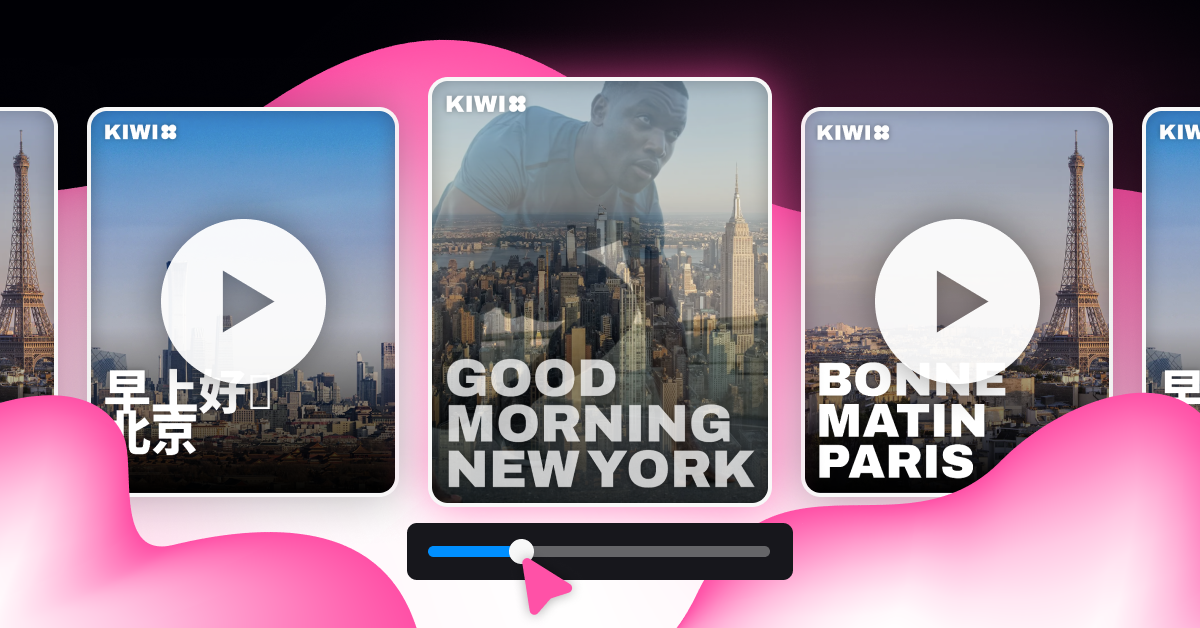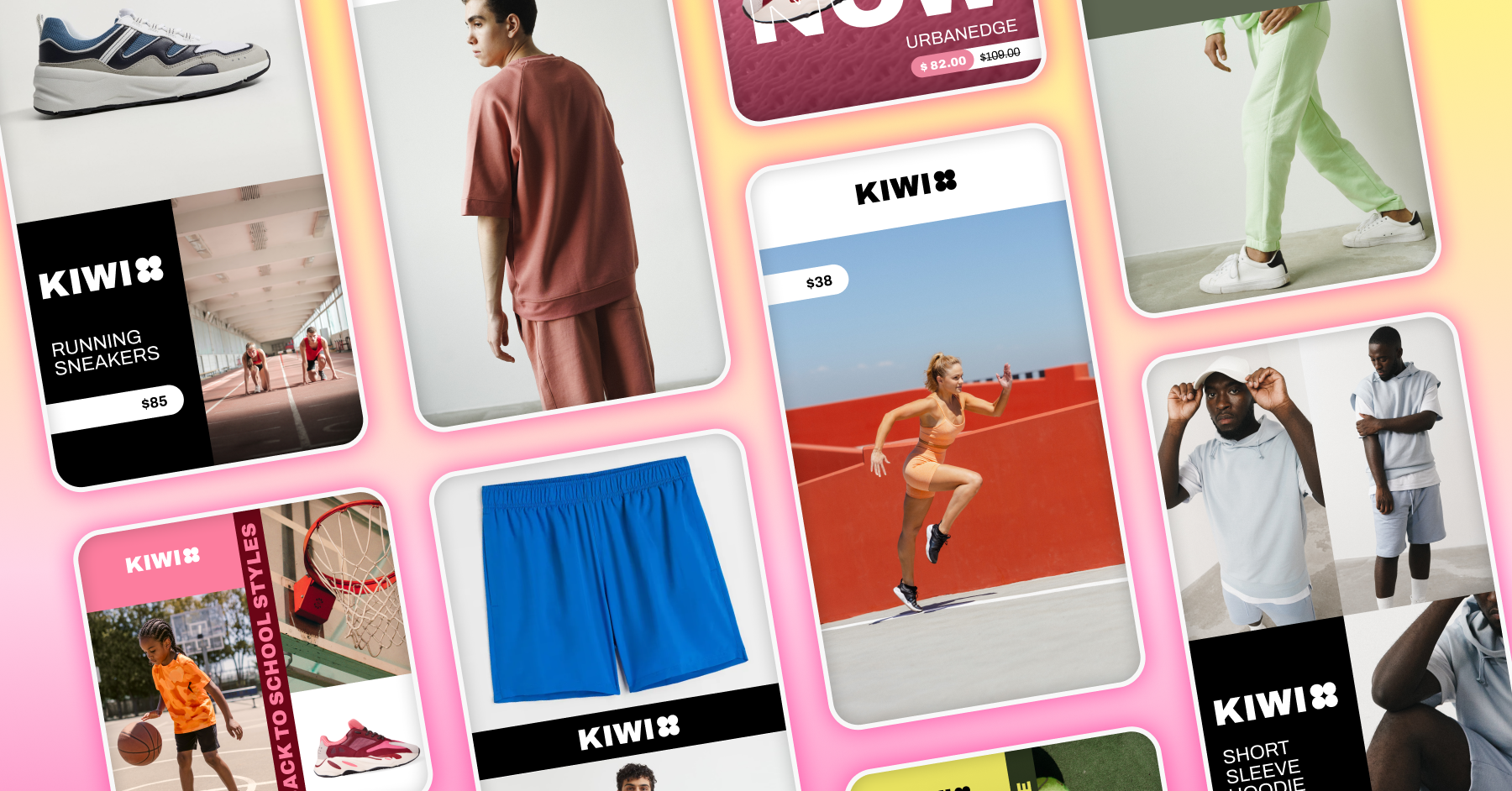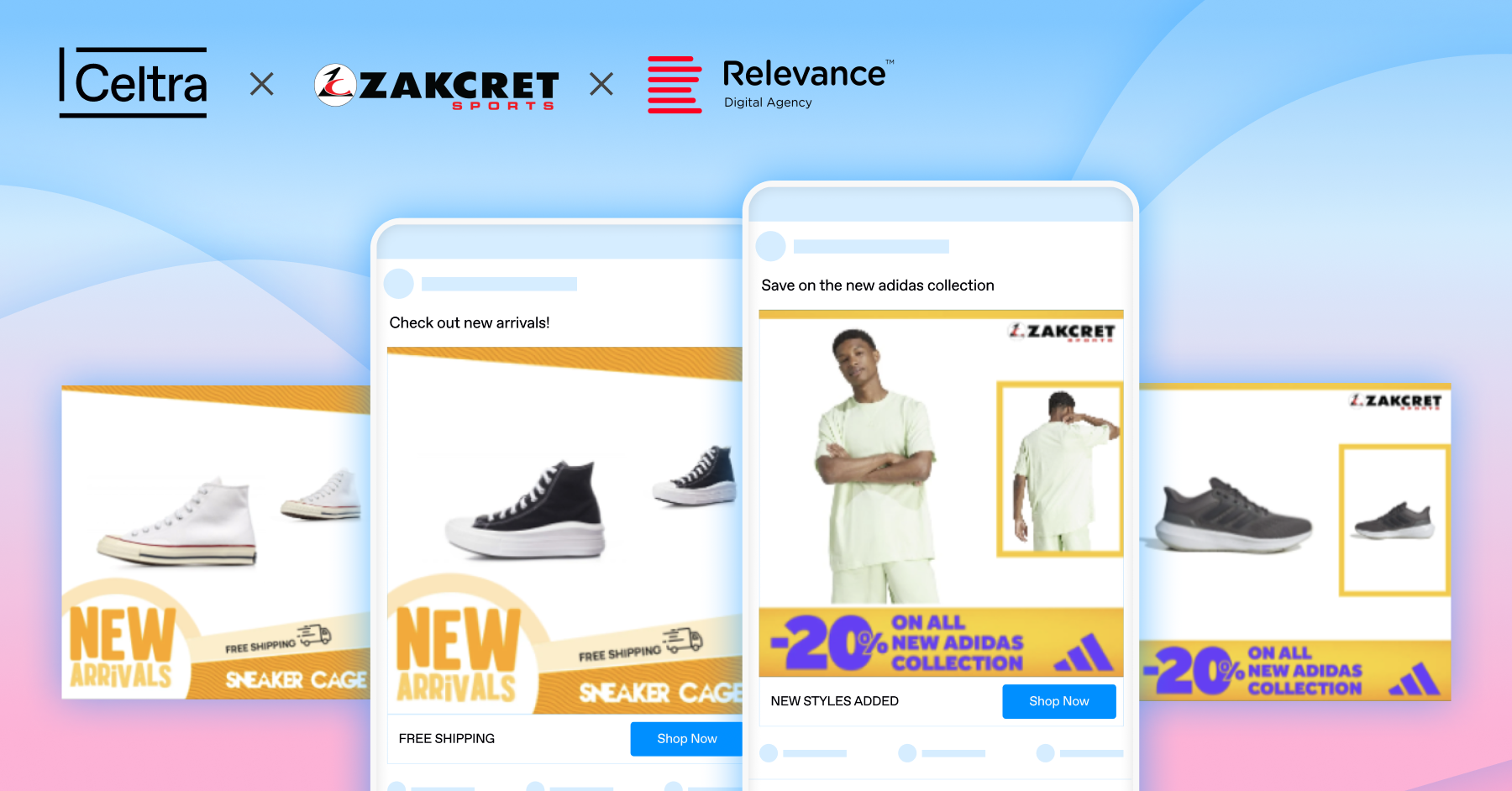As your customers get more and more scattered across different devices, channels, and locales – how can digital ads show them the right content exactly at the right time? Today, successful digital advertising needs to offer hyper-personalized, data-driven ads that can automatically adapt to viewers’ preferences and behaviors. Enter dynamic ads.
Whether you’re promoting products, services, events, or seasonal offers, dynamic ads have revolutionized the way brands engage their customers across the most popular channels including Facebook, LinkedIn, and Instagram.
So, what exactly are dynamic ads, and why should you definitely consider including them in your marketing strategy? Let’s dive in.
What are dynamic ads?
Dynamic ads are digital ads that automatically tailor their content based on different kinds of user data. Unlike traditional ads, which display the same message to everyone, dynamic ads update in real-time to match the individual’s preferences, past interactions, online behavior, and more.
This means each person sees a personalized message—whether it’s a product recommendation, service offering, or event promotion—making the ad more relevant and increasing the chances of engagement.
This kind of personalization at scale can help brands connect with their target audience more effectively, increase conversions, boost engagement, and ultimately maximize ROI.
Types of dynamic ads
Not all serve the same purpose, and each type is suited to different objectives and channels. Here are the main ones:
- Product-based dynamic ads: These ads showcase specific products based on user behavior, like items they’ve viewed, added to their cart, or purchased. E-commerce platforms often use these for retargeting, reminding users of products they’ve shown interest in.
- Location-based dynamic ads: These ads use the user’s geographic location to serve relevant content, such as nearby stores, local offers, or services available in their area. They are ideal for businesses targeting users in specific regions.
- Weather-based dynamic ads: These ads adapt based on real-time weather conditions in the user’s location. For example, a clothing brand might promote raincoats in rainy areas or sunglasses in sunny regions.
- Behavioral dynamic ads: These ads are personalized based on user behavior, like browsing history, search intent, or past interactions. For example, a travel company might show holiday packages based on previous destination searches.
- Demographic-based dynamic ads: These ads adjust based on demographic information such as age, gender, or occupation. For instance, an insurance company might offer different plans depending on the user’s age group or family status.
- Event-based dynamic ads: These ads change based on real-time events, such as sports scores, concerts, or major holidays. Advertisers use them to connect with users during relevant moments.
- Device-dased dynamic ads: These ads are customized according to the device a user is browsing on, such as mobile, desktop, or smart TV. For example, mobile users might see app download offers, while desktop users get product demos.
Where can you find them?
Pretty much everywhere. Dynamic ads are supported across the most popular channels and platforms, including:
- Facebook: Ideal for dynamic product and service ads.
- Instagram: Strong for product ads and promotional banners.
- LinkedIn: Perfect for B2B marketing, including service and event ads.
- Google Ads: Great for both product ads and dynamic display campaigns.
- Twitter: Well-suited for dynamic banners and service promotions.
What are the main advantages?
Versatile enough to be used to advertise services, promotions, and events, marketers can customize campaigns for different goals. Some key benefits include:
- Increased relevance: Personalizing ad content ensures you’re delivering the right message to the right person, which can increase engagement rates.
- Improved efficiency: The automation behind simplifies the ad creation process, allowing you to run large-scale campaigns by combining individual creative assets.
- Higher conversion rates: By tailoring ads to user behavior, you can significantly boost click-through rates (CTR) and conversions.
One of the most compelling reasons for marketers to invest in dynamic ads is their ability to drive a strong return on investment (ROI). Here’s how:
- Remarketing success: By showing personalized ads to people who have already engaged with your brand, you can remind them of products or services they’ve shown interest in, which often results in conversions.
Example: A fashion retailer can use dynamic product ads to retarget users who abandoned their shopping carts.
- Better budget allocation: Dynamic ads help you allocate your advertising spend more effectively by focusing on high-intent users. This ensures you’re not wasting your budget on low-probability leads.
Example: An online event organizer can use these ads to promote conferences to attendees who had registered for similar events in the past. This highly targeted approach can cut their ad spend while increasing ticket sales.
- Higher engagement in branding campaigns: Whether you’re launching a new product or building brand awareness, you can deliver highly engaging creatives that resonate with users, leading to better brand recall and long-term results.
Examples of dynamic ads campaigns
Dynamic campaigns can be tailored for more than just product promotion—service providers, event organizers, and even B2B companies can benefit. Here are some real-life examples:
- An athleisure retailer used customized product feeds in their dynamic product ads campaigns. This enabled them to showcase their products and displayed their unique selling points, offers, and limited-time promos to a wide target audience. The result? A distinctive brand identity, a 25% higher CTR, and a 17% increase in purchases.
- AdTheorent, a leading tech company, created a personalized CTV ad campaign for Farm Bureau HealthPlans, featuring dynamic video ads tailored to each viewer’s location with personalized messages and QR codes. The campaign achieved a 98% video completion rate and 70 QR code scans, highlighting the effectiveness of personalized video ads.
- A travel agency can use dynamic ads to promote personalized vacation packages based on users’ previous searches and booking history. This can result in an increase in click-through rates and an improvement in overall bookings.
- Another example is a SaaS company that uses dynamic service ads to promote free trials of their software to users who had visited their site. By customizing the offer to each visitor, they can achieve a lift in trial sign-ups.
Want to learn more about how to easily incorporate dynamic ads into your campaigns?
Best campaigns for dynamic ads
Dynamic ads are particularly effective in the following types of campaigns:
- Remarketing campaigns: Target users who have already interacted with your brand or website, helping you re-engage them with relevant content.
- Branding campaigns: Dynamic display and banner ads are great for creating awareness, allowing your brand to appear across different sites and platforms.
- Seasonal and promotional campaigns: Tailor your ads for specific events or limited-time offers to drive urgency and increase sales.
What are the disadvantages, and how can Celtra help you overcome them?
So, now that we’ve got the benefits down, what are some of the downsides? Like any powerful tool, this innovative ad format comes with challenges that can prevent you from getting the most out of your dynamic campaigns.
- Complex setup and management: Dynamic ads require advanced setup, especially for a proper integration of data feeds, targeting parameters, and creative templates. This can be time-consuming and you’ll need specialized skills or resources.
- Higher costs: The technology and tools needed to create and manage them often come at a high cost. This includes investment in dynamic ad platforms, creative tools, and skilled personnel to manage the ads effectively.
- Ad fatigue: Since the same creatives are often recycled with slight variations, they can cause ad fatigue for users who repeatedly see similar content, leading to a decline in engagement over time.
Celtra’s all-in-one platform helps brands effortlessly create, manage, and scale dynamic ads of the highest creative quality. Our tools streamline end-to-end creative campaign workflows, allowing you to quickly build personalized, data-driven campaigns that resonate with your audience.
With Celtra, you can:
- Set up, manage, and scale campaigns across multiple channels with ease.
- Automate creative production for personalized, on-brand ads of the highest creative quality at any scale.
- Import your existing data feeds or product catalogs.
Ready to take your dynamic ads to the next level?






